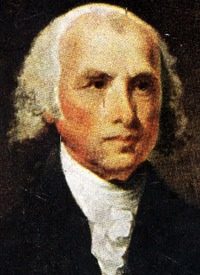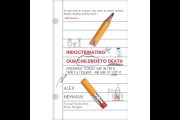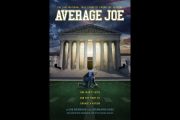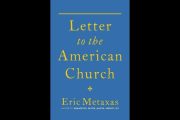
Despite the steadiness of the stream, the fertile field of “Founders Literature” never seems to reach a saturation point. Recently, a flood of books has flowed from familiar fountains: Joseph Ellis (First Family), Bruce Chadwick (Triumvirate), Pauline Maier (Ratification), and Ron Chernow (Washington: A Life). Thousands of pages on the lives and times of the men and women whose names are at the top of the dramatis personae of the founding drama.
Given the frequency of its irrigation, it is surprising that there yet remain a few arid patches of earth in the landscape of this genre. One of those areas that has remained nearly untilled by the fecund stable of able authors is the requisite ratification process that followed the adoption of the Constitution by the delegates at the Convention in Philadelphia on September 17, 1787.
Two recently published (one in hardback one in paperback re-issue) books address this oversight and both do so with engaging prose and back stories aplenty.
Triumvirate is Bruce Chadwick’s contribution to the almost furrowless field of the tale of the state debates over ratification of the product of the Convention of 1787. Chadwick is the author of two other books in the field of early American History: The First American Army and George Washington’s War, and his scholarship in the area has earned him a spot as a featured lecturer at the prestigious Rutgers University.
Chadwick’s trifurcated focus is on John Jay, Alexander Hamilton, and James Madison. A threesome that is dubbed in the book’s subtitle an “unlikely alliance.” These three influential men are credited by Chadwick with having “saved the Constitution and united the nation.” Anyone who reads Triumvirate will realize that this is no publishing hyperbole — it is the unvarnished truth.
Triumvirate opens with a list of “Important Players” catalogued under the labels of “Federalist” (pro-ratification); “Anti-federalist” (opposed to the new Constitution); and “Neutral.” The roster is further organized according to the state whence the particular player hails. The list is certainly not exhaustive when measured by scholarly standards, but it is populated with enough recognizable names to appeal to the general audience to whom the book is targeted.
True to his title, Bruce Chadwick keeps his historical eye turned primarily on Jay, Hamilton, and Madison and the tireless work each performed in ensuring that the requisite number of nine states ratified the Constitution. As any student of history will know, the work for which these three men as a group are known is the authorship, under the alias of Publius, of the letters that would become known as The Federalist Papers.
Publius’s split personality was the key to the ultimate success of the authors’ aim: establishment of a dynamic central government without diminution of the sovereignty of the states whose grant of authority created the national government. Hamilton, for example, was the impatient, self-made son of Nevis who never suffered fools with anything other than obvious disdain. Then there was Madison. If Alexander Hamilton was the fiercely beating heart of Publius, then James Madison was the cool, contemplative head with an unparalleled skill for exegesis and crystallization of the lessons of history. It is as much for his toil at the Virginia ratification convention as the earlier meeting in Philadelphia that earned Madison the enviable designation of “Father of the Constitution.”
As for John Jay, there is less of a lauded legacy. That is to say, Jay has suffered from a lamentable slight, evident from a survey of the U.S. History shelves at your local bookseller. While certainly not meant as an insult to Jay’s contribution to the cause of constitutional ratification (it was substantial), the dearth of chronicles of the life of this founder likely is due more to the man’s own diffidence and reluctance to contribute to his own aggrandizement. While Chadwick describes Hamilton as “The Peacock,” Jay is assigned the less impressive title of “Mr. Secretary” for his impressive foreign service résumé. Though undoubtedly respectable, such an appellation is hardly the stuff of bestsellers.
Of particular note in the author’s recounting of the Constitution’s turbulent journey from Philadelphia to the 13 states is the demand by many loyal Americans who withheld their support for the Constitution pending the addition of a bill of rights to the version of the document as originally passed by the delegates in Philadelphia.
Several fundamental rights are described by Chadwick as “important” to the significant bloc of patriots insistent on the explicit protections of certain liberties in the text of the Constitution. One of the chief concerns of these opponents of the Constitution was the lack of an express right to bear arms. As Chadwick explains:
The best example of why the public so strongly demanded a bill of rights was the determination of all Americans to continue to possess firearms, later recognized in the Second Amendment to the Constitution. It was as important to them as freedom of religion and freedom of the press, and, like those issues, they insisted that it had to be legally outlined in the Constitution. It could not be inferred or presumed. The heated campaign to keep guns was symbolic of the crusade to obtain a bill of rights. Freedoms had been ingrained in the American psyche and the people were not about to give them up. Guns were representative.
Of course, those who promoted passage of the new charter answered in its unamended iteration responded to this purported oversight by pointing out that fact that the Constitution was designed as a grant of limited, enumerated powers and that as no power to regulate the possession of firearms was given to any department of the new national government, no such power existed, thus the ancient right to keep and bear arms was unimpaired by the Constitution.
When taken as whole, Chadwick’s Triumvirate is a worthwhile read and brilliantly illuminates much of the vital, touch-and-go struggle that followed the long summer convention in Philadelphia. There are no evident mistakes in the book and the narrative is lively enough. In fact, at times the narrative is a bit too lively as anecdotes from the lives of Founders other than the titular body are overly abundant and momentarily distracting.
Constitutionalists should be familiar with the story of the ratification of the Constitution by the several states, and Triumvirate is a good place to start.
Given the length of time that the field of scholarship on the ratification process has lain fallow, there is no wonder that it is now so white and so ready to harvest. The second book pouring into the rows is Pauline Maier’s Ratification: The People Debate the Constitution, 1787-1788.
Few authors are abler than Pauline Maier when it comes to the crucial task of presenting the Founding Era in a manner
accessible to a broad audience without sacrificing the exactness required of respectable scholarship. Maier is the William Rand Kenan, Jr. professor of American History at MIT, and her back catalog includes the influential American Scripture: Making the Declaration of Independence, a finalist for the National Book Critics Circle award. Maier’s pen glides deftly across the page, and the result is readable, quotable, and recommendable.
The 68 pages of endnotes are evidence of the well-crafted scholarship of Ratification. The impression made by the book is also the effect of the heft of the book (nearly 600 pages). The feel is enhanced by the deckle edge of the pages; endowing the volume with a pseudo archival quality that publishers must believe has some sort of psychological impact on readers.
Psychological impact aside, the most important contribution of Maier’s Ratification is the unchallenged thoroughness of the work. According to a review published by the Wall Street Journal, “Until now, no historian had written a full-length account of the politics, personalities, arguments, and outcomes between September 17, 1787, when the Constitutional Convention completed its work, and May 29, 1790, when the last of the original states, Rhode Island, ratified the document.”
As discussed above, that claim is certainly defensible. Where Bruce Chadwick’s book takes a commendable stab at unveiling the story of ratification, Pauline Maier’s contribution reads like a medical chart, specifying the weight, height, blood pressure, and heart rate of the men and the matter they were considering.
The Table of Contents reveals that the bulk of Maier’s text recounts the story of the key conventions held in Richmond, Virginia; Philadelphia, Pennsylvania; and Poughkeepsie, New York. While the deliberations in other states are touched upon, they are treated as afterthoughts compared to the extensive accounts of the Virginia, Pennsylvania, and New York conventions. Maier defends the imbalance by pointing out that without the approbation of those bellwether states, the Constitution’s future was uncertain and its enshrinement as the foundation for a strong central government and replacement for the Articles of Confederation was by no means a sure thing.
While Triumvirate drew a small circle around a chosen group of big-named Founders through whose eyes we witness the ratification donnybrook, Ratification expands those borders to include many lesser lights who, although not as readily recognizable by modern Americans, exerted an undeniable influence on the events of the day. It is her ability to weave these lesser-used threads into her tapestry that gives it the sheen that attracts the gaze of all the curious. For example, do the names Robert Whitehill, William Findley, or John Smilie sound familiar? Unlikely. The role they played in Pennsylvania’s ratification struggle is vital, however. Flip back to the book’s index to find additional nearly forgotten names whose efforts merit pages and pages of treatment in Maier’s record.
Respectably, Maier doesn’t put rose-colored glasses over the eyes of readers. Rather, she recounts the violence that often erupted between zealous partisans over the future of the proposed Constitution. Read of the heavy-handed methods used by proponents of the Constitution to get a quorum at the ratifying convention. “Then, late on election day, November 6, a Philadelphia mob attacked Alexander Boyd’s boardinghouse, where Smilie, Findley, and others with doubts about the Constitution stayed. A dozen noisy men arrived about midnight and proclaimed in loud voices that the ‘damned rascals’ in the house ‘ought to be hanged.’” Similarly salty scenes were played out by both sides in New York and Rhode Island.
The battle lines drawn by Maier in the struggle for ratification divide the belligerents into two camps: Federalists and the less melodious “critics of the Constitution.” Maier proudly trumpets in the Prologue her deviation from the historically accepted convention of referring to opponents of the Constitution as “Antifederalists.” It was imposed on opponents of the document as a term of derision, Maier writes.
The strategy of the “critics of the Constitution,” Maier claims, was not to “scupper” the work of the Constitutional Convention; rather they insisted on a few subtractions and additions before they would sign off on the equation.
Federalists, however, countered that the Constitution was the expression of ancient and settled principles of political science and that as an express grant of very limited powers, additional impediments to federal encroachment on state and popular sovereignty were redundant and thus unnecessary.
The war raged and both sides walked away from the battlefield having ceded some territory and conquered other. Ultimately, a Bill of Rights (in the form of the first 10 amendments) was appended to the Constitution; states retained their status as sovereign entities; and the people were identified as the supreme sovereigns and the only reliable bulwark of liberty.
Ratification by Pauline Maier earns a place on the shelf of constitutionalists dedicated to understanding the principles that informed both sides of the ratification debate and how, more than anything that divided them, it was their mutual commitment to federalism, separated powers, and enumeration of limited powers granted to the central authority that united them all, and we would be wise to follow their lead.
James Madison: AP Images



